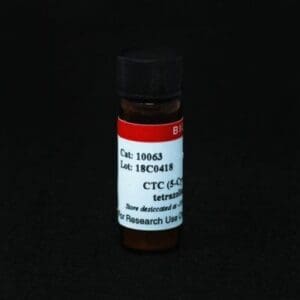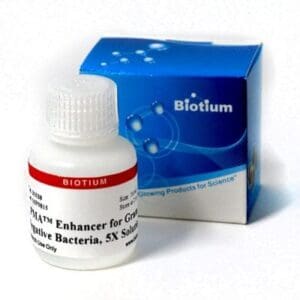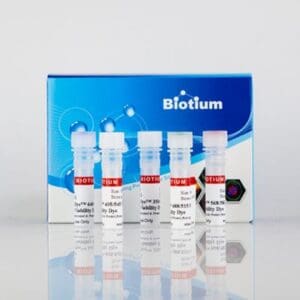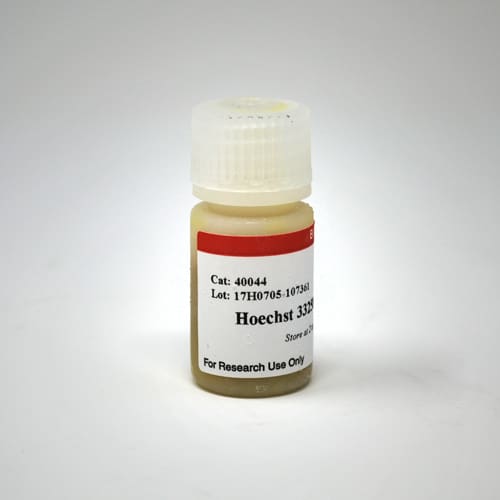
Hoechst dyes are cell membrane-permeant, minor groove-binding blue fluorescent DNA stains. Hoechst dyes are widely used in cell cycle and apoptosis studies as nuclear counterstains.
| Name | SKU | Size | Availability | Vendor | Price | Order | |
Hoechst 33342 |
40047 | 100 mg | Generally 1-2 weeks from receipt of order | Biotium | Log in for pricing | ||
Hoechst 33342, 10mg/mL in H2O |
40046 | 10 mL | Generally 1-2 weeks from receipt of order | Biotium | Log in for pricing | ||
Hoechst 33258 |
40045 | 100 mg | Generally 1-2 weeks from receipt of order | Biotium | Log in for pricing | ||
Hoechst 33258, 10mg/mL in H2O |
40044 | 10 mL | Generally 1-2 weeks from receipt of order | Biotium | Log in for pricing |
Product Description
Hoechst dyes are cell membrane-permeant, minor groove-binding blue fluorescent DNA stains. These dyes are widely used in cell cycle and apoptosis studies as nuclear counterstains. Biotium offers Hoechst 33258 and Hoechst 33342 dyes in both solution or powder forms. Both dyes are spectrally similar but Hoechst 33258 is slightly more water soluble than Hoechst 33342. The dyes can be used to stain live or fixed cells in buffer or medium at 1 ug/mL, with no wash step required.
Hoechst can also be used to stain live bacteria (gram-positive and gram-negative), but in live yeast the staining is weak and not nuclear. Check out our tech tip on Hoechst & DAPI Staining, which includes helpful tips and detailed protocols for staining live and fixed cells and tissues. Also see our Cellular Stains Table for more information on how our dyes stain various organisms.
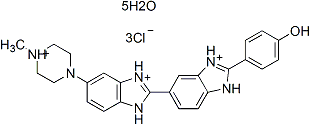
Hoechst 33258, pentahydrate
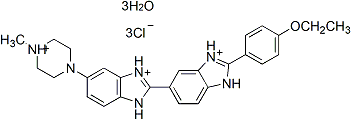
Hoechst 33342, trihydrochloride trihydrate
Biotium also offers unique NucSpot® Nuclear Stains for bright and specific nuclear staining in dead or fixed cells. The stains are available in a wide range of colors from green to near-IR. We also offer DAPI nuclear stains in powder or solution.
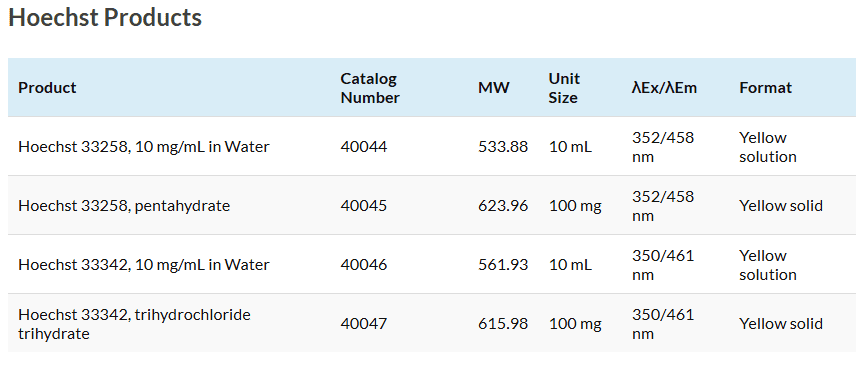
Having trouble with your experiment? See our section on troubleshooting tips for fluorescent staining.
Resources
Protocols
SDS
Supporting Documents

